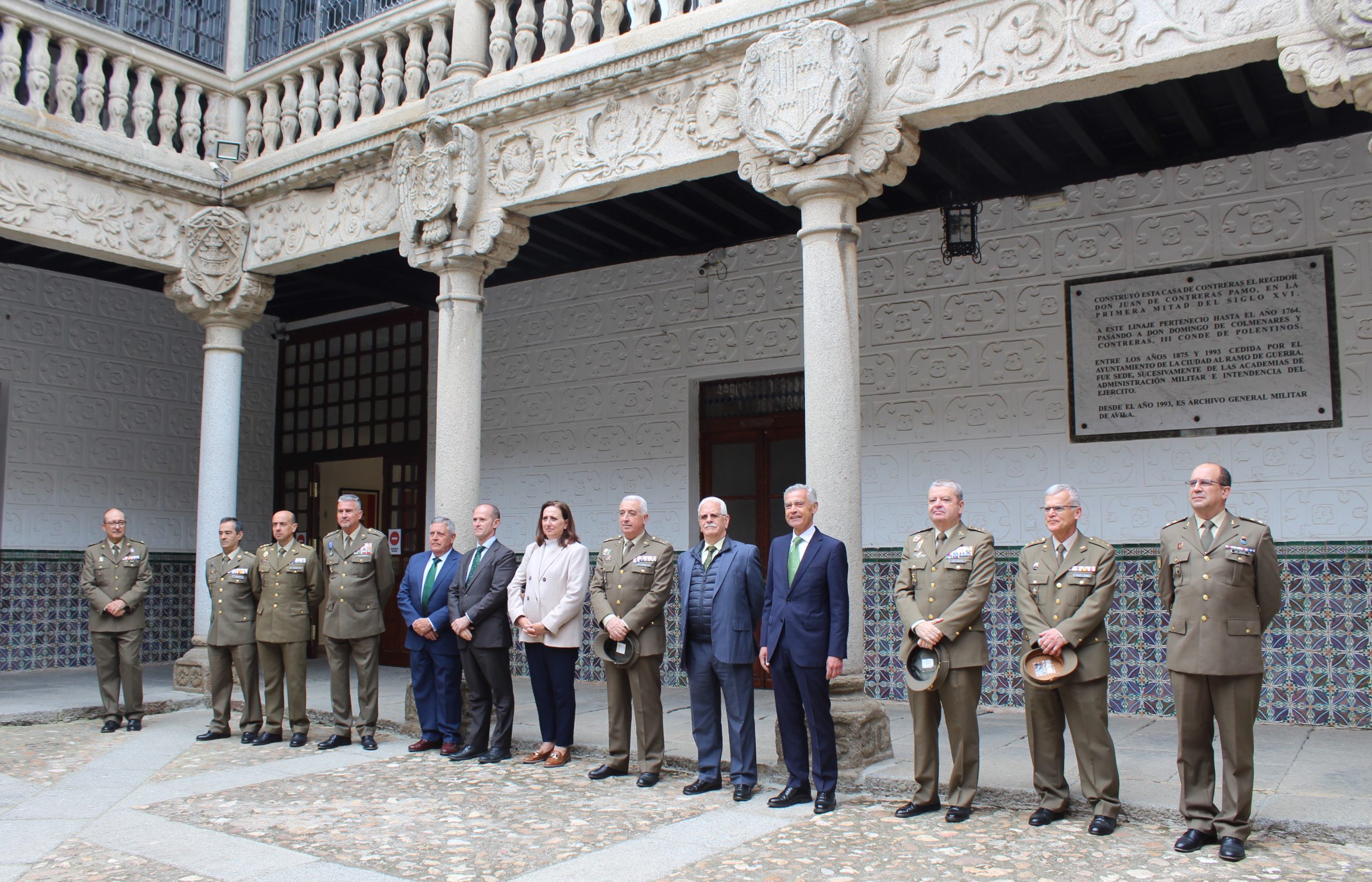Fundación Iberdrola España collaborates in the restoration of the courtyard of the Polentinos Palace
- This action includes the volumetric reintegration, cleaning, and repair of some ashlars located on the north side of the courtyard of this Renaissance building
- The agreement was signed by the president of Fundación Iberdrola España, Fernando García, and the managing director of the Fundación Museo del Ejército, Francisco Ramos, in the presence of authorities from the Institute of Military History and Culture and the General Military Archive of Ávila
Fundación Iberdrola España and the Fundación Museo del Ejército have signed an agreement to carry out a project to restore two lintels in the courtyard of the Palacio de Polentinos, in the capital of Ávila, property of the Spanish Army and headquarters of the General Military Archive of Ávila.
The agreement was signed this morning in the capital of Avila by the president of Fundación Iberdrola España, Fernando García, and the managing director of the Fundación Museo del
Ejército, Francisco Ramos, in the presence of the director of the Institute of Military History and Culture, Antonio Ruíz, authorities from the Directorate of Economic Affairs of the Army and the General Military Archive of Avila.
This action includes the volumetric reintegration of the lost pieces of two lintels of the courtyard of this two-story Renaissance building, with five monolithic columns, topped by footings and friezes with a plateresque decoration of coats of arms and plants.
The passage of time and inclement weather have caused the deterioration and loss of some ashlars located on the north side of the courtyard, which will be cleaned and repaired thanks to this agreement.
The Polentinos Palace, declared an Asset of Cultural Interest, with the category of national monument, since December 1999, was built at the beginning of the 16th century, in the Renaissance style. It should be noted that the layout and decorative richness of its façade make it one of the most important in the city.
This initiative is yet another example of Iberdrola’s commitment to Castilla y León and its permanent aim to promote the social value of culture and the conservation of the region’s historical and artistic heritage.
The Institute of Military History and Culture is grateful to Iberdrola for its ongoing interest in promoting art and culture, especially in the field of the Army, as evidenced by this collaboration in such a special monument for the city of Ávila.
Iberdrola, with the promotion of art and culture
One of Iberdrola’s main areas of action, through its foundation in Spain, focuses on the care, conservation, and enhancement of historical and artistic wealth.
Together with the Portuguese Ministry of Culture and the Regional Government of Castilla y León, the company is carrying out an ambitious project to restore and maintain the monuments of Romanesque art in 24 temples: 13 located in northern Portugal and 11 in Spain in the vicinity of the Duero and Támega rivers (in Salamanca and Zamora).
This public-private initiative called the Atlantic Romanesque Intervention Plan, seeks to recover the cultural, natural, and social heritage of the region, carry out a socioeconomic revitalization project and strengthen cross-border ties between Spain and Portugal.
It is also worth mentioning the Lighting Program, whose main objective is to develop interventions in unique buildings to install or improve their interior and/or exterior lighting systems to contribute to the enhancement of heritage.
Since 2011, the volume of investment allocated by Fundación Iberdrola to the Lighting Program has amounted to more than 3 million euros and has involved the improvement of over 40 monuments in Spain, including the exterior of the Cathedral of Ávila, the interior of the Cathedral of Palencia and the New Cathedral of Salamanca, the church of San Hipólito el Real in Palencia, the historic Roman Bridge of Alcántara in Cáceres, the façade of the Congress of Deputies, the Palace of the Supreme Court in Madrid, the Cathedral of Santiago de Compostela, and the Cathedral of Sigüenza.

